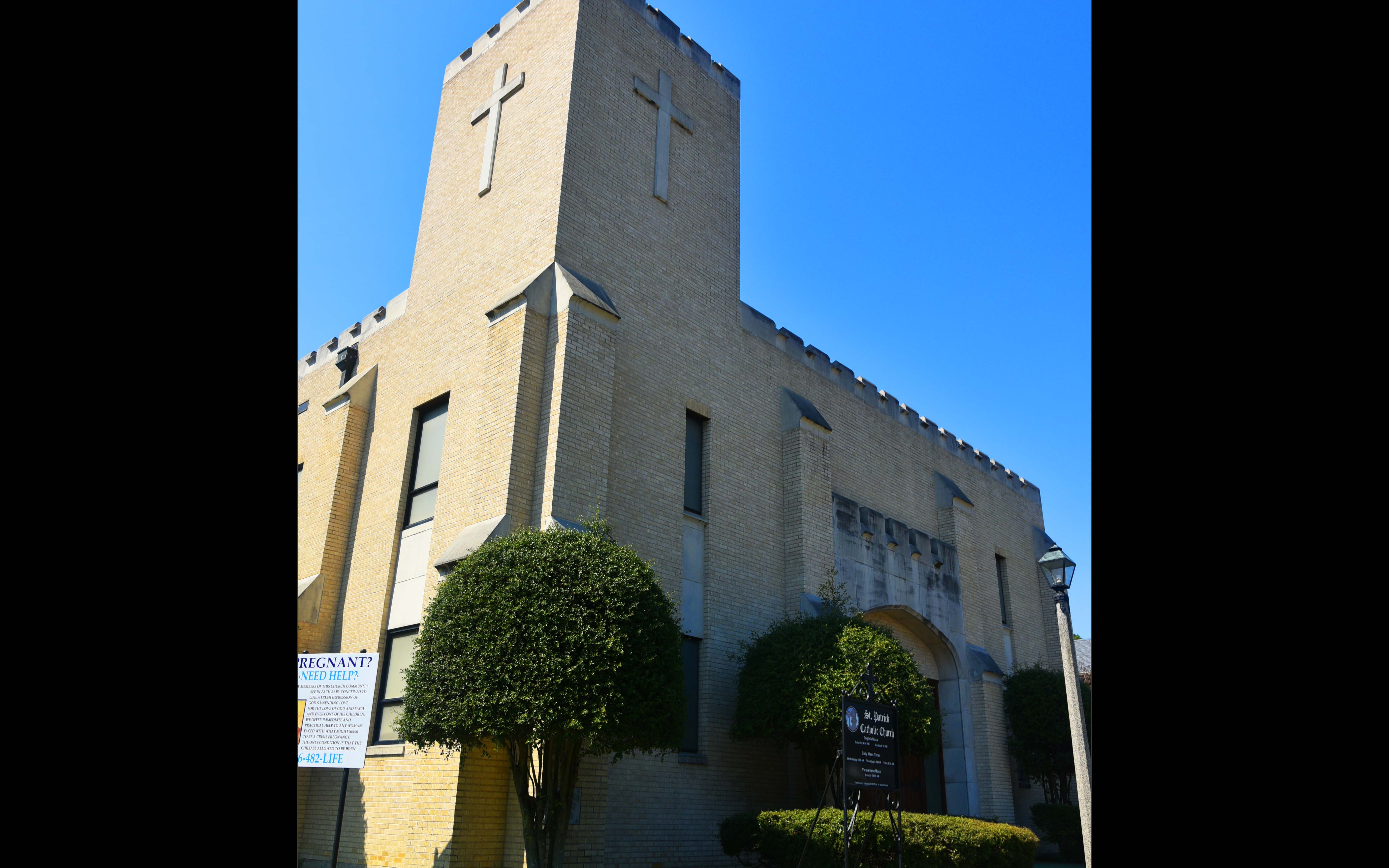Natural State of Architecture
March 25-31, 2019
By Mason Toms
St. Patrick’s Catholic Church
North Little Rock has long been home to decently large population of Catholics, but it was not until 1880 that they had a church in their own city. Up until that time, any Catholics seeking to attend mass would have to walk at least three blocks the river, and then take a ferry across the river, as there were no bridges across the river at the time, only to have another eight blocks or so to walk before arriving at their place of worship. Bishop Edward Fitzgerald sought to remedy this by purchasing a lot at the corner of Third and Maple in North Little Rock, and erected a small frame church and rectory, naming it after St. Patrick in honor of the many Irish immigrants who had come to the area to work in the booming railway industry. In 1893, the congregation moved to an existing building on Seventh Street, between Olive and Cypress streets. Their new home was constructed by a Baptist congregation, but that congregation suffered financial ruin before they could occupy the space. Not long after, a rectory, two-room school, and convent for the Sisters of Mercy were constructed on the site, which spanned seven lots.
As the city of North Little Rock grew, so too did the city’s Catholic population. By 1929, it became obvious that the former location could no longer meet the needs of the expanding congregation. They purchased an entire block that was bounded by Orange Street to the West, Maple Street to the East, 19th Street to the South, and 20th Street to the North. In 1931, a new church and school were dedicated, and in 1937, a new rectory was constructed. At their new home, St. Patrick’s continued to grow, eventually necessitating three masses to be held in order to accommodate all of the parishioners.
In 1955, St. Patrick’s was once again in desperate need for more space. A fundraising campaign began in the fall of that year with a goal of obtaining $140,000 for the construction of a new house of worship. Within a year, the congregation managed to gather $166,000, more than enough to build their new home. They enlisted the services of Little Rock architect, Burgh Burnet, who created a design in a simplified Gothic Revival style. The architecture was meant to reflect the many ancient and imposing castles that dot the Irish countryside with its crenelated cornice, brick buttresses and shallow arched, stone entrance. In this way, the building itself, and not solely the name, would provide a tangible link to the heritage of many of the founding members. Appropriately, the new church was dedicated on St. Patrick’s Day in 1956. However, the building was not fully complete until 1965, after the stained glass windows and a new Italian Bottecini, cream-pearl marble altar was installed in the sanctuary, leading The Guardian, the Catholic newspaper for Arkansas, to say it was “one of the most beautiful sanctuaries in the Diocese of Little Rock.”
Over its 139-year history, St. Patrick’s has served Catholics of North Little Rock faithfully and with open arms. Though it was the only Catholic Church on the north side of the river when it was founded, since that time three more Catholic churches have opened in North Little Rock. St. Patrick’s Catholic Church shows us that sometimes the natural state of architecture is of connecting people to their past while creating a place for them to grow into the future.



